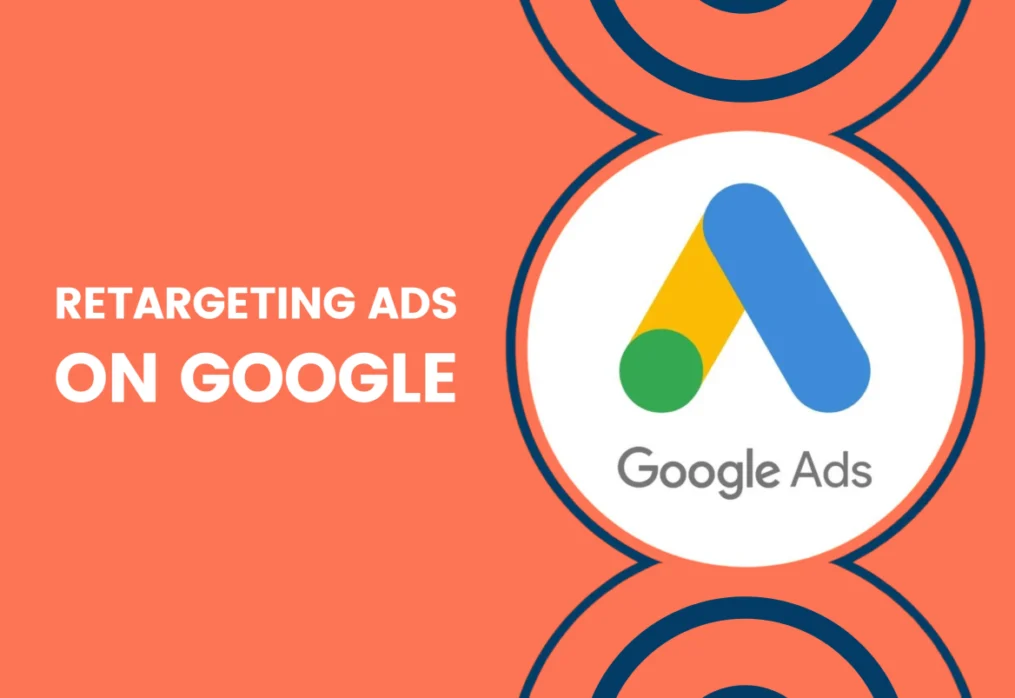Retargeting Ads on Google: Boost Your Conversion Rates and Maximize ROI
Retargeting ads have become an essential strategy for businesses seeking to re-engage users who have previously shown interest in their products or services. By targeting these warm leads, you can dramatically increase your chances of converting them into paying customers. In this comprehensive guide, we will delve into the world of retargeting ads on Google and show you how to take your advertising game to the next level.
Learn the secrets of creating a successful Google Ads campaign to drive targeted traffic to your website and boost your sales.
From understanding your audience and setting up the necessary tracking codes to optimizing your ads for maximum impact, we will leave no stone unturned.
Whether you’re a seasoned Google Ads user or a complete beginner, this ultimate guide will provide you with the knowledge and tools you need to succeed in the world of retargeting. Get ready to supercharge your conversion rates and maximize your ROI with Google retargeting ads!
Discover a guide for Facebook ads that complements your retargeting strategy, ensuring you reach your audience on multiple platforms.
What Are Retargeting Ads on Google
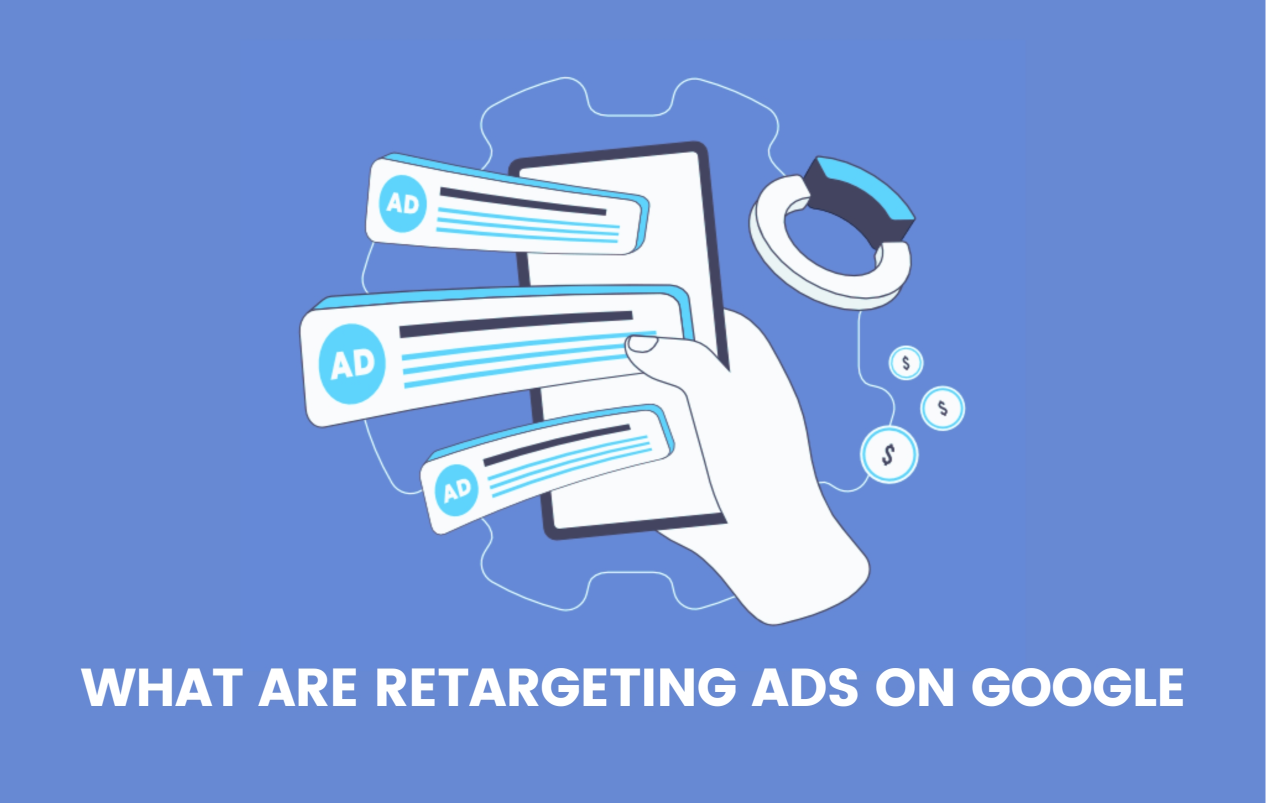
Retargeting ads, also known as remarketing ads, are a powerful advertising technique that allows businesses to target users who have previously interacted with their website or shown interest in their products or services. These ads are displayed to users as they browse other websites or use search engines, reminding them of the brand and encouraging them to revisit the website and make a purchase.
Retargeting ads work by placing a small piece of code, often referred to as a pixel, on the website. This pixel tracks the users who visit the website and enables the business to show them relevant ads across the Google Display Network or on search engine results pages.
Utilize creative healthcare advertising techniques to make your retargeting ads stand out in a competitive market.
How Do Retargeting Ads Work
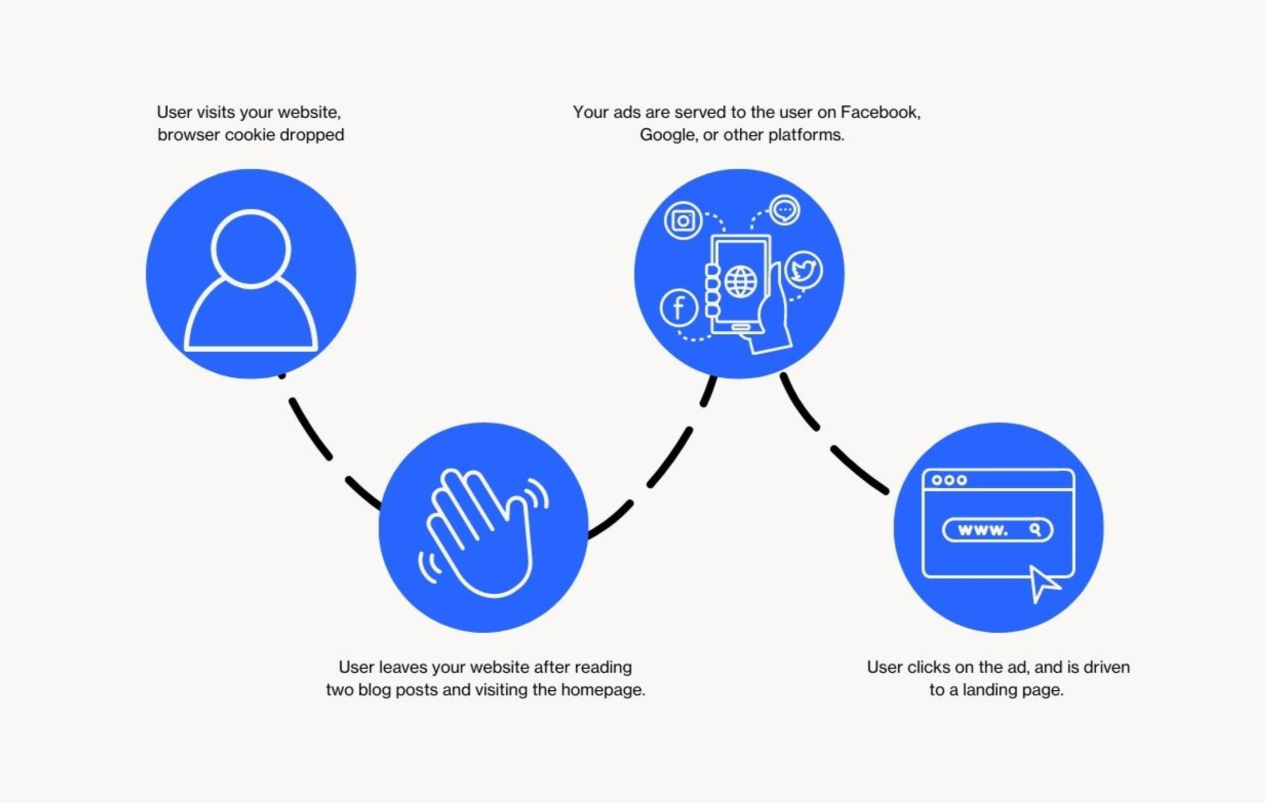
When a user visits a website, the retargeting pixel drops a cookie into the user’s browser. This cookie then enables the website to identify the user when they visit other websites or search for products or services related to the website they previously visited.
Once the user is identified as a potential lead, the retargeting platform serves them with relevant ads. These ads can vary in format, including display ads, text ads, and even video ads. The goal is to remind the user of their initial interest and encourage them to return to the website and complete a desired action, such as making a purchase.
By integrating how video marketing can boost your ROI into your retargeting efforts, you can capture your audience’s attention more effectively.
Retargeting ads can be highly effective because they target users who have already shown some level of interest in the brand, making them more likely to convert compared to cold leads. By keeping the brand top of mind, retargeting ads help businesses stay engaged with potential customers and increase their chances of driving conversions.
Benefits of Using Retargeting Ads
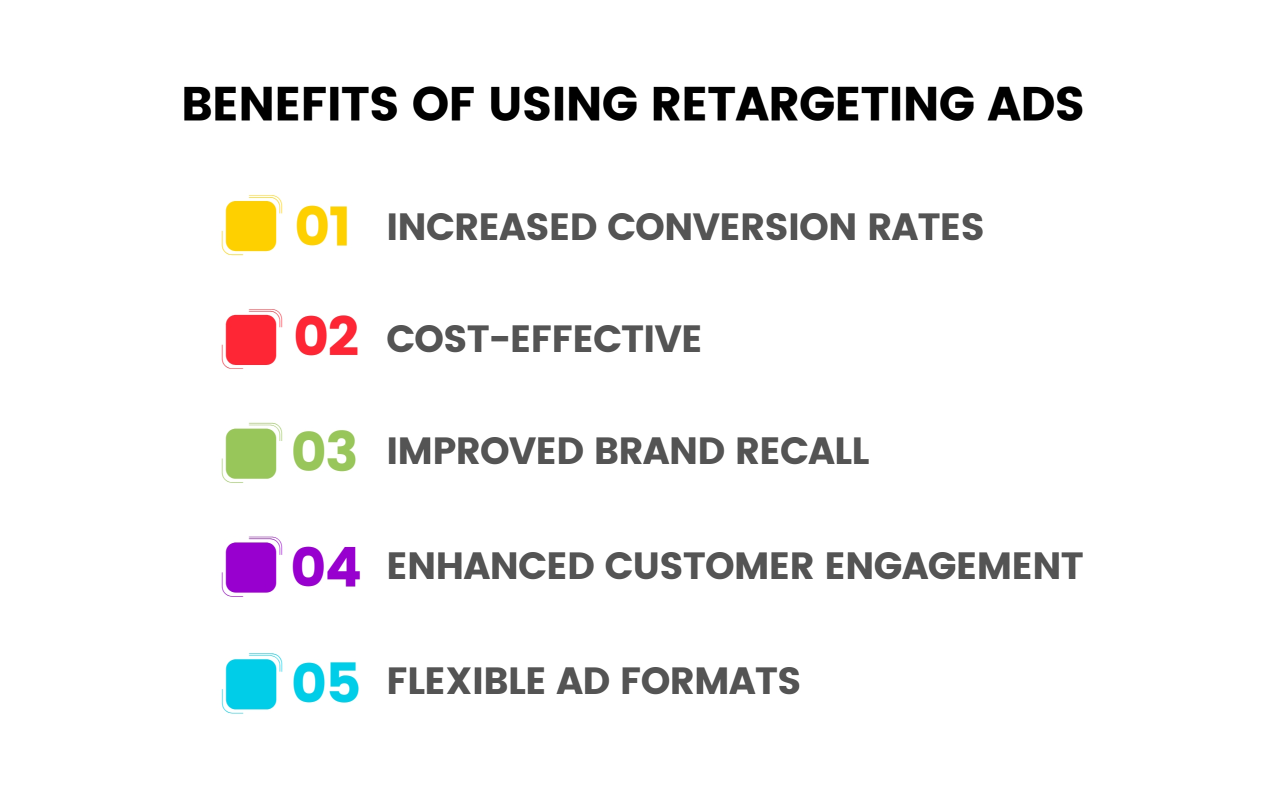
Retargeting ads offer several benefits for businesses looking to boost their conversion rates and maximize their ROI. Here are some key advantages of incorporating retargeting ads into your advertising strategy:
1. Increased Conversion Rates
Retargeting ads target users who have already shown interest in your products or services, making them more likely to convert. By keeping your brand top of mind, you can significantly increase your conversion rates and drive more sales.
2. Cost-Effective
Retargeting ads can be a cost-effective advertising strategy since you are targeting warm leads rather than starting from scratch with cold leads. This means you can allocate your advertising budget more efficiently and achieve a higher return on investment.
3. Improved Brand Recall
By consistently displaying your ads to potential customers, retargeting helps improve brand recall. Users are more likely to remember your brand and consider it when making a purchasing decision.
4. Enhanced Customer Engagement
Retargeting ads provide an opportunity to engage with potential customers at different stages of the buyer’s journey. By showing them relevant ads based on their previous interactions, you can guide them through the sales funnel and nurture their interest.
5. Flexible Ad Formats
Retargeting ads offer a range of ad formats, including display ads, text ads, and video ads. This flexibility allows you to experiment with different formats and find the most effective way to reach and engage your target audience.
Overall, retargeting ads can significantly impact your marketing efforts by improving conversion rates, increasing brand recall, and maximizing your return on investment. It’s a strategy that no business should overlook when planning their advertising campaigns.
Retargeting Ad Statistics
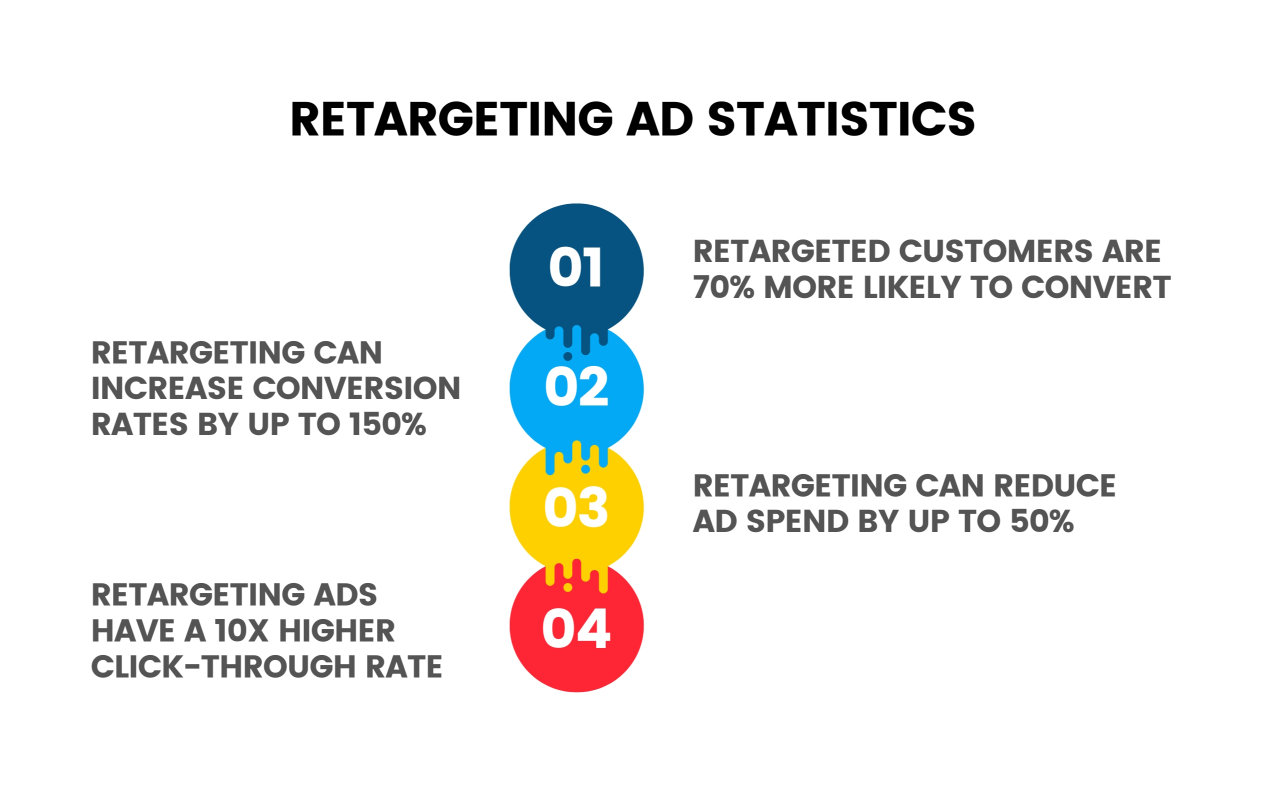
Before diving into the nitty-gritty of creating retargeting ad campaigns, let’s take a look at some compelling statistics that highlight the effectiveness of this advertising strategy:
1. Retargeted customers are 70% more likely to convert
According to a study conducted by Criteo, users who are served with retargeted ads are 70% more likely to convert compared to those who are not retargeted. This statistic alone demonstrates the power of retargeting in driving conversions.
2. Retargeting can increase conversion rates by up to 150%
A study by AdRoll found that retargeting ads can increase conversion rates by up to 150%. This significant boost in conversions is a testament to the effectiveness of retargeting in capturing and converting warm leads.
3. Retargeting can reduce ad spend by up to 50%
By targeting warm leads who are already familiar with your brand, retargeting ads can be more cost-effective compared to traditional advertising methods. A study by Digital Information World revealed that retargeting can reduce ad spend by up to 50%. This means you can allocate your budget more efficiently and achieve a higher return on investment.
4. Retargeting ads have a 10x higher click-through rate
According to WiderFunnel, retargeting ads have a click-through rate that is 10 times higher than regular display ads. This higher engagement rate indicates that retargeting ads are more likely to capture the attention of users and drive them back to your website.
These statistics highlight the immense potential of retargeting ads in boosting conversion rates, reducing ad spend, and increasing engagement. Now that we understand the benefits and effectiveness of retargeting, let’s dive into the step-by-step process of creating an effective retargeting ad campaign on Google Ads.
Creating an Effective Retargeting Ad Campaign
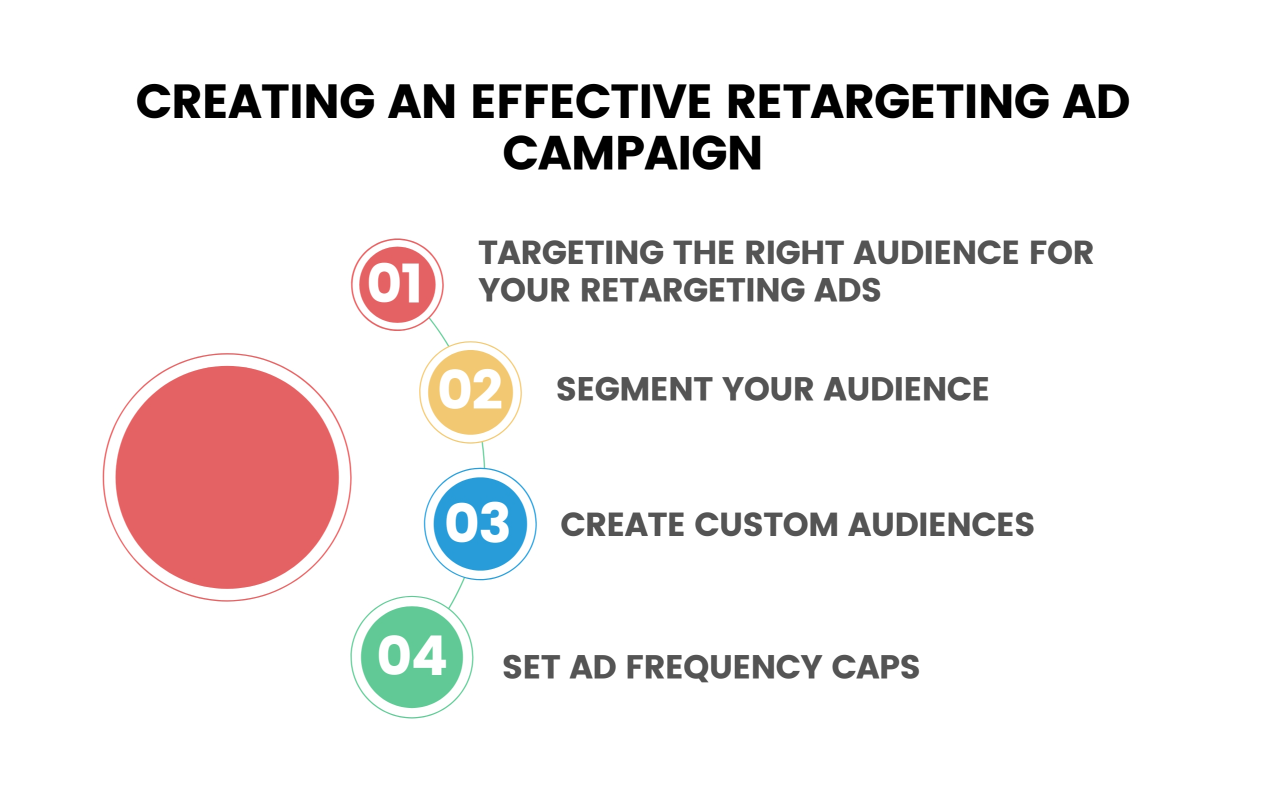
1. Targeting the right audience for your retargeting ads
The first step in creating an effective retargeting ad campaign is to identify and target the right audience. Since retargeting ads are meant to re-engage users who have previously shown interest in your brand, it’s crucial to define your target audience based on their past interactions.
2. Segment your audience
Start by segmenting your website visitors based on their behavior and actions. For example, you can create segments for users who have added items to their cart but haven’t made a purchase, users who have visited specific product pages, or users who have abandoned the checkout process. Segmenting your audience allows you to tailor your retargeting ads to their specific needs and interests.
3. Create custom audiences
Once you have segmented your audience, you can create custom audiences in Google Ads. Custom audiences are based on specific criteria or actions taken by the users. For example, you can create a custom audience of users who have visited your website in the past 30 days but haven’t made a purchase. This audience can then be targeted with relevant retargeting ads.
4. Set ad frequency caps
While retargeting ads are effective, bombarding users with too many ads can lead to ad fatigue and decreased effectiveness. Setting ad frequency caps allows you to control the number of times a user sees your ads within a specified period. This ensures that your ads remain impactful without overwhelming the user.
By targeting the right audience with your retargeting ads, you can increase the chances of re-engaging users and driving conversions. However, targeting alone is not enough. The design and content of your retargeting ads play a crucial role in capturing the user’s attention and inspiring action.
Monitoring and Optimizing Your Retargeting Ad Campaign

Once your retargeting ad campaign is up and running, it’s crucial to monitor its performance and make necessary optimizations to improve its effectiveness. Here are some key metrics to monitor and optimize:
1. Click-Through Rate (CTR)
The CTR measures the percentage of users who clicked on your retargeting ads. A low CTR may indicate that your ads are not compelling enough or not reaching the right audience. Test different ad variations and targeting options to improve your CTR.
2. Conversion Rate
The conversion rate measures the percentage of users who completed the desired action, such as making a purchase or filling out a form, after clicking on your retargeting ads. Monitor your conversion rate and identify any bottlenecks in the conversion process. Optimize your landing pages and checkout process to improve your conversion rate.
3. Cost Per Acquisition (CPA)
The CPA measures the average cost of acquiring a customer through your retargeting ads. Keep an eye on your CPA and optimize your bids, targeting, and ad creative to reduce your acquisition costs and maximize your return on investment.
4. Audience Performance
Analyze the performance of different audience segments to identify which segments are driving the highest conversions. Allocate more budget and resources to the high-performing segments and adjust your targeting strategy for underperforming segments.
5. Ad Placement
Monitor the performance of your retargeting ads on different websites, placements, and devices. Identify top-performing placements and increase your bids or allocate more budget to those placements to maximize your reach and effectiveness.
By regularly monitoring and optimizing your retargeting ad campaign, you can ensure that you are getting the most out of your advertising budget and driving optimal results. However, to create and manage retargeting ads effectively, you need the right tools and platforms.
Conclusion
Retargeting ads on Google are a game-changer for businesses looking to boost their conversion rates and maximize their return on investment. By targeting users who have previously shown interest in your brand, you can significantly increase your chances of converting them into paying customers.
In this ultimate guide, we have explored the world of retargeting ads on Google, from understanding the basics and benefits to creating effective campaigns and optimizing their performance. By following the step-by-step process and implementing best practices, you can take your advertising game to the next level and supercharge your conversion rates.
Take advantage of Google advertising free consultation in Maryland to get expert advice and maximize your campaign’s performance.
Remember, retargeting ads require continuous monitoring and optimization to ensure optimal results. Experiment with different ad variations, targeting options, and platforms to find what works best for your business. With the right strategy and tools, you can maximize the impact of your retargeting ad campaigns and achieve impressive results.
So, what are you waiting for? Start implementing retargeting ads on Google today and watch your conversion rates soar!
